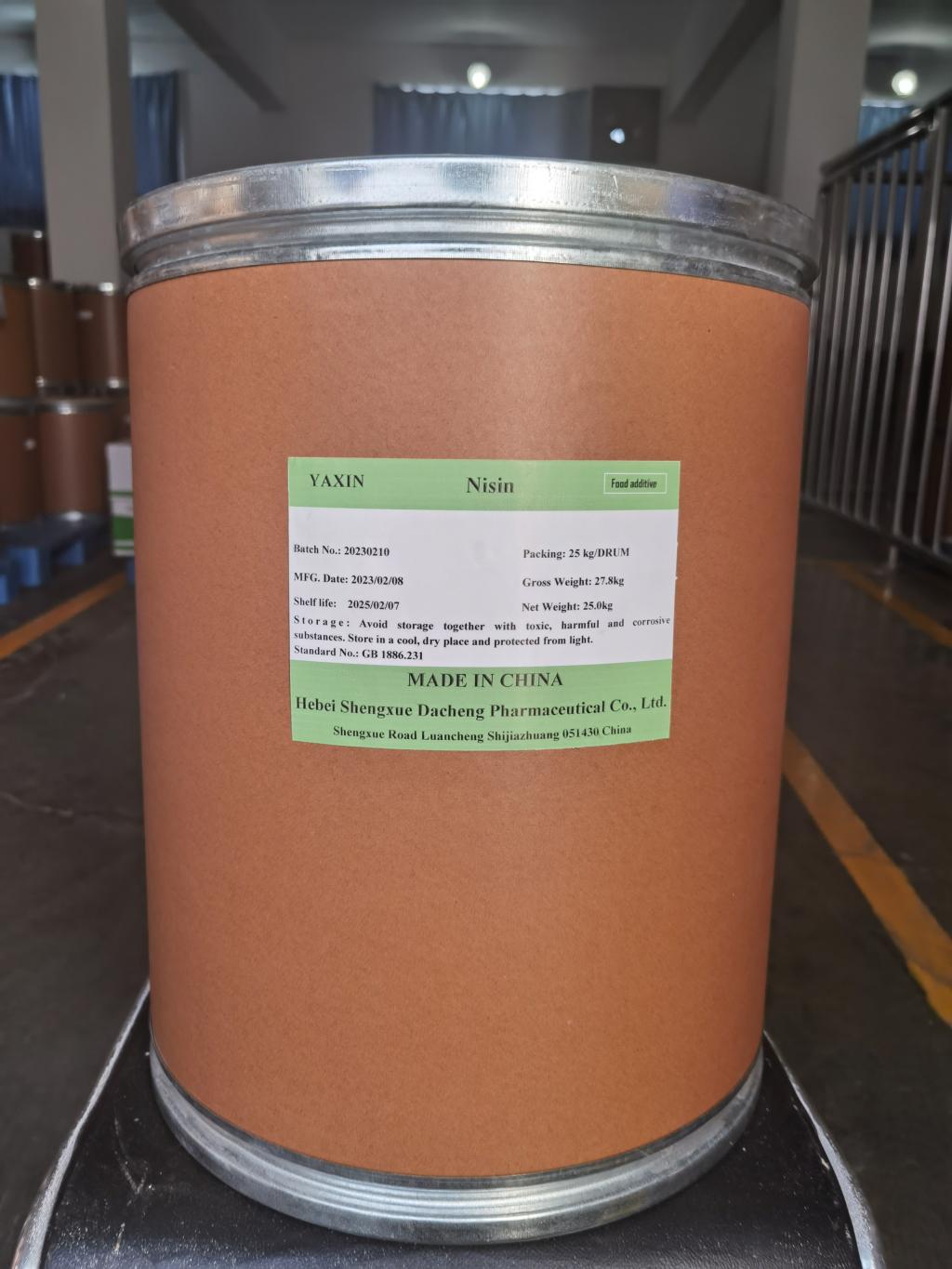Tel:+8618231198596

News
 CONTACT
CONTACT
 CONTACT
CONTACT
- Linkman:Linda Yao
- Tel: +8618231198596
- Email:linda.yao@dcpharma.cn
- Linkman:CHARLES.WANG
- Department:Overseas
- Tel: 0086 0311-85537378 0086 0311-85539701
News
Has Nisin been studied for its potential to control the growth of mold and yeast in food products?
TIME:2023-06-19
Understanding Mold and Yeast in Food:
Mold and yeast are ubiquitous microorganisms that can contaminate a wide range of food products. They thrive in environments with high moisture levels and can cause visible signs of spoilage, such as discoloration, off-flavors, and textural changes. Some molds also produce mycotoxins, which pose a health risk if consumed in significant amounts. Controlling the growth of mold and yeast is crucial to maintain food quality and safety.
Nisin as an Antimicrobial Agent:
Nisin is a natural antimicrobial peptide produced by the bacterium Lactococcus lactis. It is recognized as a Generally Recognized as Safe (GRAS) substance by regulatory authorities and has a long history of safe use in the food industry. Nisin exhibits potent antimicrobial activity against various Gram-positive bacteria, including foodborne pathogens such as Listeria monocytogenes. While its efficacy against bacteria is well-established, research has also explored its potential to control mold and yeast growth.
Inhibition of Mold Growth by Nisin:
Several studies have investigated the inhibitory effects of nisin on mold growth in different food matrices. Nisin has been shown to effectively inhibit the growth of common molds such as Aspergillus, Penicillium, and Fusarium species. It disrupts the fungal cell membrane, leading to cellular leakage and subsequent inhibition of growth. Nisin's broad-spectrum activity against molds makes it a promising natural alternative to synthetic preservatives.
Suppression of Yeast Growth by Nisin:
In addition to its mold-inhibiting properties, nisin has also demonstrated effectiveness against yeast species. Yeast, including Saccharomyces, Candida, and Zygosaccharomyces, can cause fermentation and spoilage in various food products. Research has shown that nisin can effectively suppress the growth of these yeasts, preventing spoilage and extending product shelf life. Nisin's ability to disrupt yeast cell membranes contributes to its antimicrobial activity.
Synergistic Effects of Nisin with Other Preservation Methods:
To enhance its antimicrobial efficacy, nisin can be combined with other preservation methods. Studies have explored the synergistic effects of nisin with physical techniques such as high pressure processing (HPP) and thermal treatments. The combination of nisin and HPP, for example, has been shown to have a greater inhibitory effect on mold and yeast growth compared to individual treatments. Such combinations offer the potential for reducing the reliance on higher levels of nisin and may provide a more robust preservation strategy.
Application of Nisin in Food Products:
Nisin has been successfully applied in various food products to control mold and yeast growth. It has been used in cheese, fermented sausages, bakery products, and beverages. Incorporating nisin into these food matrices has proven effective in extending shelf life, improving product quality, and reducing the risk of spoilage. The dosage and application method of nisin vary depending on the specific food product and the target microorganisms.
Consumer Perception and Labeling:
Consumer perception plays a significant role in the acceptance of nisin as a natural preservative. Transparent and accurate labeling practices are essential to inform consumers about the presence of nisin in food products. Clear communication regarding its natural origin, safety, and role in preserving food quality can foster consumer trust and acceptance.
Future Directions and Challenges:
While research on nisin as a mold and yeast inhibitor is promising, several challenges remain. Optimization of nisin dosage and application methods for different food matrices is necessary to achieve consistent and effective results. Furthermore, the potential impact of nisin on sensory attributes and the development of resistant strains should be carefully evaluated. Collaborative efforts between researchers, food manufacturers, and regulatory bodies will facilitate the widespread application of nisin as a natural antimicrobial agent.
Conclusion:
Nisin shows great potential as a natural antimicrobial agent for controlling mold and yeast growth in food products. Its broad-spectrum activity, safety profile, and compatibility with various preservation methods make it an attractive alternative to chemical preservatives. Further research and development are necessary to optimize its application in different food matrices and ensure its efficacy while maintaining product quality and safety. The utilization of nisin can contribute to the production of safer, longer-lasting, and more sustainable food products.
- Tel:+8618231198596
- Whatsapp:18231198596
- Chat With Skype







